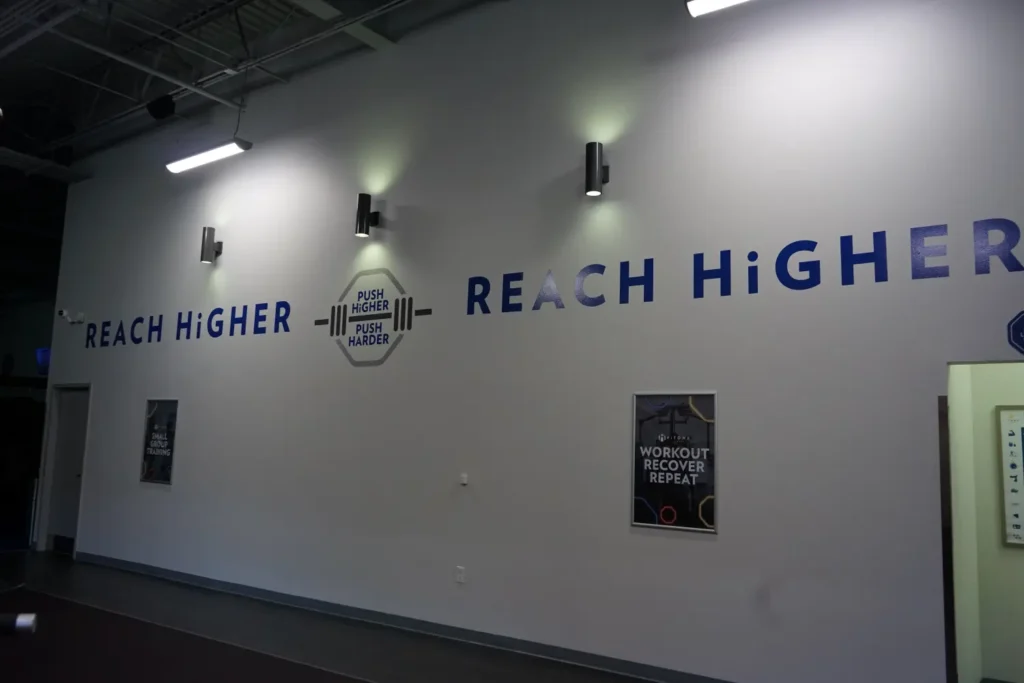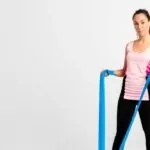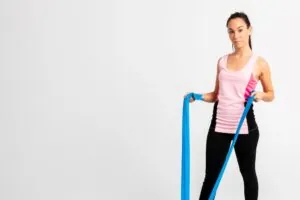Kettlebell workouts offer a dynamic way to improve strength, flexibility, and endurance with minimal equipment. Among various exercises, the kettlebell windmill is particularly notable for its comprehensive health benefits, targeting the core, shoulder, and hamstring muscles.
This exercise not only boosts muscular strength but also enhances posture and overall body coordination. However, like any specialized movement, the kettlebell windmill demands a good grasp of technique to maximize benefits and minimize the risk of injury. In this guide, we’ll walk through each step required to perform a kettlebell windmill safely and effectively, making it an ideal starting point for beginners.
What is the kettlebell windmill?
The kettlebell windmill is a compound exercise that challenges the body through a combination of rotational and lifting movements. Performed with a kettlebell, this exercise primarily engages the core, shoulders, and posterior chain (the muscles along the back of the body), promoting functional strength and flexibility.
Benefits you can experience
Engaging in kettlebell windmill exercises can lead to significant health benefits, such as increased shoulder stability, improved core strength, and enhanced flexibility.
The rotational movement helps in improving the thoracic mobility of the spine, essential for everyday movements and athletic performance.
Moreover, it’s an excellent calorie burner due to its full-body engagement, making it a valuable addition to any fitness routine aimed at weight loss or improved physical conditioning.
Preparing for the kettlebell windmill
Selecting the appropriate kettlebell is crucial for beginners. It is generally recommended to start with a lightweight—around 10 to 15 pounds—allowing you to focus on mastering form without straining your muscles.
Physical preparation
Before attempting the kettlebell windmill, ensure your body is adequately prepared. Begin with a 10-minute warm-up that includes dynamic stretches such as arm circles, leg swings, and hip rotations to increase your heart rate and loosen up your muscles. Additionally, performing some light cardiovascular exercises like jogging or jumping jacks can further prepare your body for the workout ahead. If you want to mix strength exercise with cardio, do these calorie-burning kettlebell exercises. before the windmill.
Step-by-step execution
- Stance: Position your feet slightly wider than shoulder-width apart with one foot turned out slightly. This foot positioning is crucial as it affects the rotation of the hips and alignment during the exercise.
- Hand and arm position: Start by placing the kettlebell next to the foot with the toes pointed out. Bend from the hip and grasp the kettlebell with the opposite hand of the foot that is turned out. Raise the kettlebell overhead while keeping the arm straight, ensuring the weight is stabilized.
- The movement: Begin the windmill by pushing your hips back and to the side, keeping the kettlebell arm locked and the eyes on the weight. Lower your torso towards the floor while reaching down with your free hand towards the opposite foot. The descent should be slow and controlled. Touch the foot or reach as close as possible without compromising form, then reverse the movement to return to the starting position.
Common mistakes and how to avoid them
- Overextending: One frequent mistake is overextending the back or locking the knees during the movement, which can lead to strain. To avoid this, focus on maintaining a slight bend in the knees and a tight core throughout the exercise to support your spine.
- Incorrect weight: Beginning with a kettlebell that’s too heavy is a common error that can lead to poor form and potential injuries. Start with a lighter weight that allows you to perform the exercise with the proper technique. Once you can execute several repetitions flawlessly, consider gradually increasing the weight.
Advanced tips
As you grow more comfortable with the basic kettlebell windmill, there are several techniques to enhance its effectiveness:
- Increase the weight: Once you can perform multiple sets with perfect form, gradually increase the weight of the kettlebell to continue challenging your muscles.
- Add pauses: Introduce pauses at the bottom of the movement to increase time under tension, which can help improve muscle endurance and strength.
- Speed variations: Experiment with the speed of your ascents and descents. Slow movements increase the workout’s intensity by requiring more control, whereas faster speeds can help develop power and explosive strength.
If you need more ideas for advanced workouts that will challenge you, get in touch with our personal trainers in Fayetteville.
Final thoughts
The kettlebell windmill is a multifaceted exercise that enhances strength, flexibility, and stability across various muscle groups. Perfect for those looking to spice up their fitness routine, it requires attention to form and an understanding of one’s limits. Beginners should prioritize mastering the technique with lighter weights before progressing to more challenging variations or heavier kettlebells.







